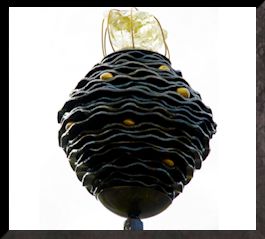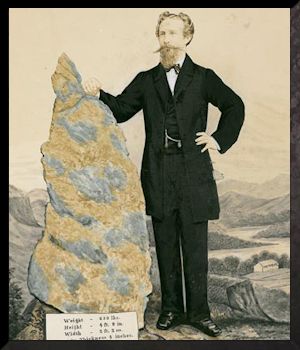|
|
|
|
||||
|
|
GOLD DISCOVERED NEAR BATHURST In 1841 a distinguished geologist, Reverend William Branwhite Clarke, conducted a range of expeditions around the Colony of NSW. Near Hartley he observed oil shale and coal, and fossils of the fern Glossopteris, which were a marker for heavy coal seams. He also chipped the quartzite he found in Hartley, and realised it was gold-bearing. The Australian Dictionary of Biography reports that Governor Gipps is said to have urged him to be quiet about it:
Clarke was not quiet, but in any case, others in the Colony turned their minds to the search for gold. It only took a decade. As Launceston’s Cornwall Chronicle reported, Edward Hargreaves struck gold at Ophir, near Bathurst, in February 1851. Hargreaves was not a miner: his aim was to claim the NSW Government’s reward for finding a payable goldfield. He publicized the discovery in May 1851, and by June there were 2,000 men at the Ophir diggings. A second rush occurred from 1871 when Hill End prospector Bernhard Holtermann and his team of miners found the world’s largest specimen of reef gold, a 286kg nugget. Working with the photographers Henry Beaufoy Merlin and Charles Bayliss, Holterman also promoted his discoveries, with the aim of boosting migration. The gold rushes ushered in a period of massive change in the Colonies. Sydney and Melbourne languished as working men took off for the goldfields, and the interior was changed forever as people poured into the diggings. Thousands of migrants arrived, trebling the population and bringing entrepreneurs and workers with experience and technical knowledge from the mineral industries of the English Black Country and America, and labour and mercantile experience from China. Amongst those brought to these shores by gold was the family of one Charles Hoskins, who would have an enormous impact on Lithgow. Towns burst forth where none had been before and lines of transportation were laid down, including the legendary Cobb & Co coaches, led by James Rutherford, who later boosted the Eskbank Iron Works. The boom generated pressure for railways. The rushes went on until the late 1870s, and although gold mining waned, they left a legacy of hardened workers, used to digging, who could work both railway lines and coal mines, and had brought entrepreneurs and investors, keen for opportunity. SOURCES State Library of NSW, Eureka! The rush for gold
|
|
||||
|
|
|
|


